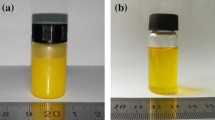Abstract
Lithium aluminosilicate inorganic polymers were synthesised from dehydroxylated kaolin-type clay (halloysite) by the conventional method under highly alkaline conditions with lithium hydroxide or lithium silicate solutions of two different Li2O/SiO2 molar ratios. Variants were also developed of a solid-state synthesis method involving the thermal reaction of dehydroxylated halloysite with LiOH followed by hydration of the product. The molar compositions of the materials prepared by all three methods (SiO2/Al2O3 = 2.41–3.27, Li2O/SiO2 = 0.30–0.61, and H2O/Li2O = 9.33–10.40) fall within the range of compositions previously reported to produce viable geopolymers. Curing at 40 °C produces solid samples of varying viability depending on the amount of synthesis water. The cured materials are not characteristically X-ray amorphous, but contain the lithium zeolites Li-ABW and fibrous Li-EDI, the latter in the materials synthesised by solid-state reaction. The 27Al and 29Si MAS NMR spectra of the cured materials contain narrow resonances more characteristic of zeolites than of inorganic polymers. Heating the synthesised products at <800 °C produces β-eucryptite, LiAlSiO4. In a further series of thermal reactions, β-spodumene, LiAlSi2O6 is formed at 900 °C, decomposing at 1100 °C to form additional β-eucryptite. At 1275 °C, β-spodumene reappears in the samples of higher silica content. Judicious manipulation of the composition and thermal treatment of the Li-zeolites formed in these lithium aluminosilicate syntheses could make them useful precursors to β-eucryptite and β-spodumene ceramics.




Similar content being viewed by others
References
Davidovits J (1991) J Therm Anal 37:1633
Barbosa VFF, MacKenzie KJD, Thurmaturgo C (2000) Int J Inorg Mater 2:309
Iler RK (1979) The chemistry of silica. Wiley, New York
Wijnen PWJG (1989) J Non-Cryst Sol 109:85
Kinrade SD, Pole DL (1992) Inorg Chem 31:4558
Fletcher RA, MacKenzie KJD, Nicholson CL, Shimada S (2005) J Eur Ceram Soc 25:1471
Barrer RM, Mainwaring DE (1972) J Chem Soc Dalton Trans 2534
Barbosa VFF, MacKenzie KJD (2003) Mater Lett 57:1477
Cundy CS, Cox PA (2005) Microporous Mesoporous Mater 82:1
Kolousek D, Brus J, Urbanova M, Andertova J, Hulinsky V, Vorel J (2007) J Mater Sci 42:9267. doi:10.1007/s10853-007-1910-5
MacKenzie KJD (2009) Ceram Eng Sci Proc 30:251
Beall GH (1992) Ann Rev Mater Sci 22:91
Roy R, Agrawal DK, McKinstry HA (1989) Ann Rev Mater Sci 19:59
Bedard RL, Flanigen EM (1993) United States Patent 5179051
Subramanian MA, Corbin DR, Chowdhry U (1993) Bull Mater Sci 16:665
Baerlocher C, Meier WM, Olson DH (2001) Atlas of zeolite framework types, 5th edn. Elsevier, Amsterdam
Matsumoto T, Miyazaki T, Goto Y (2006) J Eur Ceram Soc 26:455
Sathupunya M, Gulari E, Wongkasemjit S (2004) Mater Chem Phys 83:89
Yao ZT, Xia MS, Ye Y, Zhang L (2009) J Hazardous Mater 170:639
Haden WL, Dzierzanowski F (1964) United States Patent 3123441
Rees CA, Provis JL, Lukey GC, van Deventer JSJ (2008) Colloids Surf A 318:97
Klinowski J, Thomas JM, Fyfe CA, Hartman JS (1981) J Phys Chem 85:2590
Rios CA, Williams RCD, Roberts CL (2009) Fuel 88:1403
Klinowski J (1984) Prog Nucl Magn Reson Spectrosc 16:237
Magi M, Lippmaa E, Samosan A (1984) J Phys Chem 88:1518
Gabriel A, Slavin M, Carl HF (1942) Econom Geol 37:116
Yamuna A, Devanarayanan S, Lalithambika M (2001) J Am Ceram Soc 84:1703
Acknowledgements
We are indebted to M. J. Ryan for assistance with the interpretation of the XRD data and to D. Flynn for assistance with the electron microscopy. This study was partly funded by a subcontract from Industrial Research Ltd. of the Foundation for Research Science and Technology contract CO8X0302 and partly by the MacDiarmid Institute for Advanced Materials and Nanotechnology.
Author information
Authors and Affiliations
Corresponding author
Rights and permissions
About this article
Cite this article
O’Connor, S.J., MacKenzie, K.J.D. Synthesis, characterisation and thermal behaviour of lithium aluminosilicate inorganic polymers. J Mater Sci 45, 3707–3713 (2010). https://doi.org/10.1007/s10853-010-4383-x
Received:
Accepted:
Published:
Issue Date:
DOI: https://doi.org/10.1007/s10853-010-4383-x




